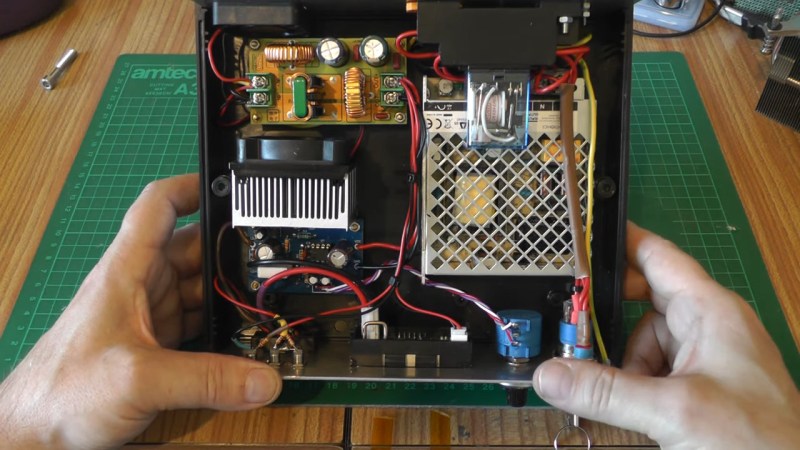
[Les] from [Les’ Lab] has designed a driver for laser diodes up to 10 watts, and decided to show us how it operates, tells us what we should keep in mind when designing such a driver, and talks about laser safety in general. This design is an adjustable current regulator based on the LM350A, able to provide up to 10 watts of power at about 2 volts – which is what his diode needs. Such obscure requirements aren’t easily fulfilled by commonly available PSUs, which is why a custom design was called for.
He tells us how he approached improving stability of the current regulation circuit, the PCB design requirements, and planning user interface for such a driver. However, that’s just part of the battle – regulating the current properly is important, but reducing the potential for accidental injuries even more so. Thus, he talks extensively about designing the driver circuit with safety in mind – using various kinds of interlocks, like a latching relay circuit to prevent it from powering up as soon as power is applied.
 Of course, safety concerns go beyond the driver’s features, and so does [Les], feeling that we should know what goes into operating a laser of such power. He explains the importance of choosing proper safety glasses for the wavelengths involved – what the various relevant numbers mean, and how to use these numbers to choose glasses actually able to protect you from going blind on accident. Mounting everything in a solid way is called for, too – you wouldn’t want the laser to accidentally move away from the path you want it to shine in, since even reflections can be quite dangerous.
Of course, safety concerns go beyond the driver’s features, and so does [Les], feeling that we should know what goes into operating a laser of such power. He explains the importance of choosing proper safety glasses for the wavelengths involved – what the various relevant numbers mean, and how to use these numbers to choose glasses actually able to protect you from going blind on accident. Mounting everything in a solid way is called for, too – you wouldn’t want the laser to accidentally move away from the path you want it to shine in, since even reflections can be quite dangerous.
In the end, [Les] shows the driver in action coupled with a laser diode, and produces enough smoke that we are legally obligated to consider this a ‘smoke test’ – a successful one! He has big plans for that diode, and we can’t wait to see them come into fruition.
[Les]’s YouTube channel has videos about all kinds of electronics-related DIY builds, and is definitely worth going through if laser-adjacent topics are of interest to you. We’ve covered a few of his builds in the past, including a Raspberry Pi-based spectrometer and a high-voltage switch out of a simple spark gap.
0 Commentaires